Darts is still one of the most popular sports today. Whether it’s in professional tournaments or a casual game at the pub, the right dart board is critical to the enjoyability of a game.
However, finding suitable darts and dartboards and adjusting height and distance for various settings can be tricky. That’s why, in this article, we’ll delve into how to purchase and set up the perfect darts configuration for any space.
Table of Contents
What businesses should consider when choosing dartboards
How to measure for the ideal dartboard height and distance
Summary
What businesses should consider when choosing dart boards
1. Type
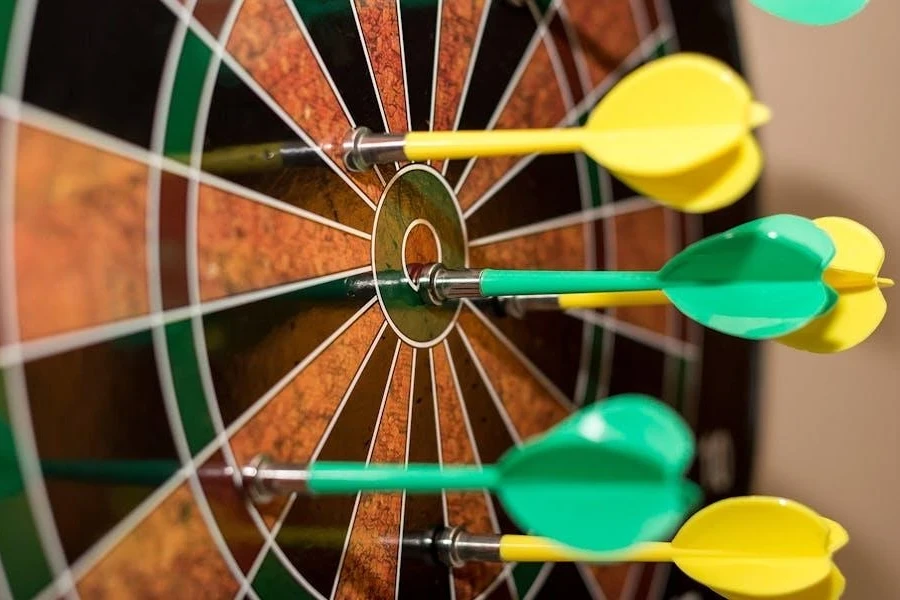
I. Bristle dart boards
Bristle (or sisal) dartboards have been the favorite for professional competitions and home setups since the early ’70s. Made from packed sisal fibers, they provide a rugged, self-healing surface that can take even the roughest treatment from a dart’s tip.
However, bristle boards come in varying qualities. A good-quality board, for example, will feature dense sisals with uniform distribution, providing better scoring consistency and higher dart retention.
II. Electronic dartboard
Bristle options may be the most popular, but electronic dartboards are catching up fast. Thanks to constantly upgrading technologies, electronic dartboards are always evolving to be more convenient and versatile.
Electronic dartboards come equipped with plastic surfaces that host internal sensors, which detect dart strikes and automatically calculate scores for a more seamless experience. In most cases, they also come with different modes and multiplayer options.
Some models even allow consumers to link their boards with smartphone applications for better gameplay. For this reason, electronic dartboards are perfect for casual players or those who seek more interactivity.
III. Wood dartboards
Wooden (or cabinet) dartboards provide a more classic and easy-on-the-ete experience, generally featuring a wooden backboard and a sisal or cork face to capture darts.
Although they tend to look nicer, wooden dart boards require much more care than other varieties, and are also less durable than bristle boards. For this reason, wooden dart boards act better as decorative pieces or for occasional use.
IV. Cork dartboards
These dartboards are a cheaper, attractive option compared to the options above. They feature cork sheets bound together to give a unique tactile feeling. Although they don’t share the self-repair qualities of bristle boards, they make up for it with affordability. In all, cork dartboards are ideal for novices who want to build their game.
V. Coiled paper dart boards
Another unconventional variety of board is the coiled paper dartboards. These boards have an unusual texture and playing experience, and while durability may not be as outstanding as other types, they are unique enough to attract players looking for something different.
2. Size and dimensions
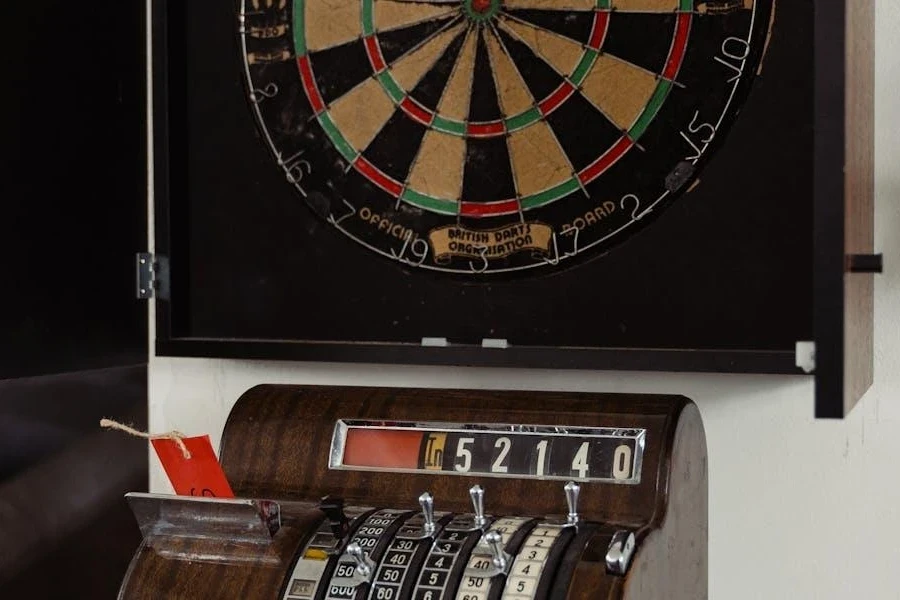
Dartboards come in different dimensions, with the official or regulation size being 18 inches in diameter. Smaller dartboards are also available for consumers who may have less space, or for junior players. When stocking these boards, it’s important retailers describe what sized playing area they are best suited to.
| Dartboard size | Dimensions |
| Standard | 18 inches (45.7cm) |
| Smaller (practice) | Although they vary, smaller boards are typically around 12 to 15 inches (30.5 to 38.1cm) |
| Larger (uncommon) | They vary, but rarely exceed 24 inches (61cm) |
3. Dart type
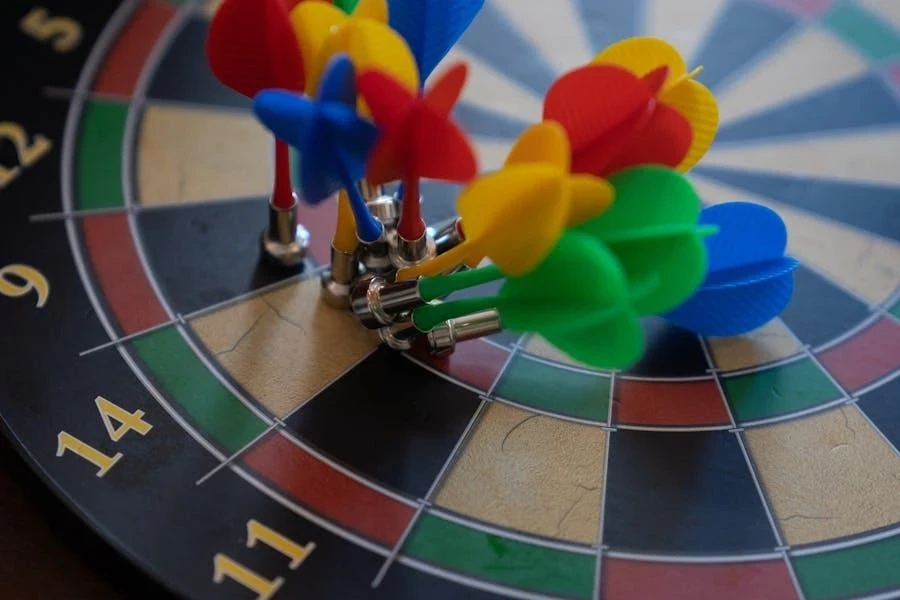
A consumer’s preferred dart type will determine the kind of dart board they will want. Generally, there are two main types:
I. Steel-tip darts
Steel-tip darts are the classic and most widely recognized option in the dart world. This dart type has small, sharp steel tips that penetrate dart boards. For this reason, they’re used with bristle or cork dartboards.
II. Soft-tip darts
Soft-tip (or magnetic/plastic-tip) darts offer a safer game than their steel-tip counterparts. While these darts only work on electronic and magnetic boards, that makes them more convenient for home and casual use.
Although soft-tip darts offer convenience and safety, many dart enthusiasts prefer the traditional challenge or steep-tip darts. Ultimately, what consumers choose will come down to personal preference and the playing environment.
4. Wiring
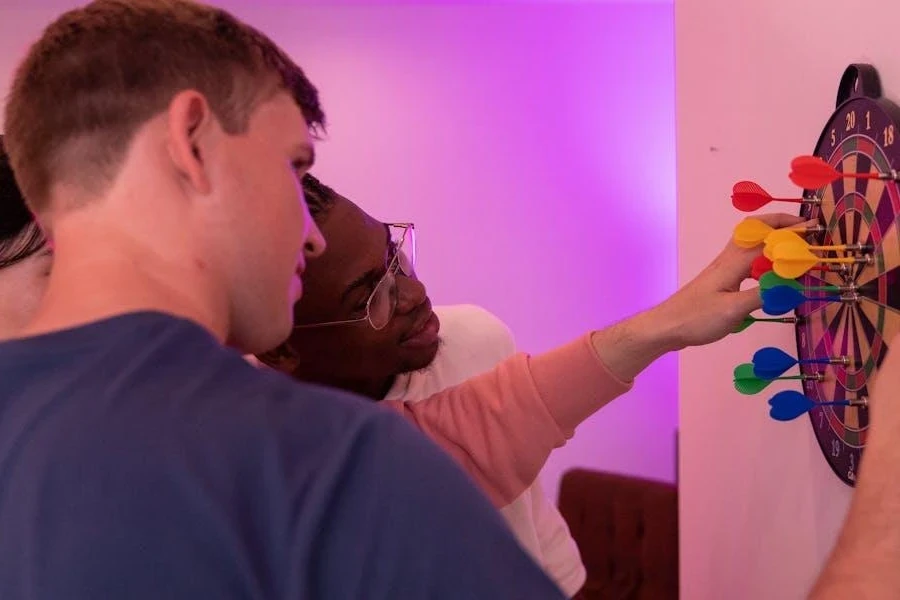
Dartboards can feature a range of wiring options, including round, tri-, and professional-level configurations. Here’s a closer look at each option:
Round wire boards
These dartboards feature round wires running on their surfaces. The wires are usually thick enough to deflect darts that hit them, which can be dangerous in some scenarios. Nevertheless, round wire boards are excellent for casual play and are a great choice for beginners.
Tri-wire boards
Tri-wire dart boards feature triangular-shaped wires, with one point slightly extending from the board. They’re designed this way to deflect darts into adjacent sections instead of deflecting if they hit the wire. For this reason, tri-wire boards are often safer than their round-wire counterparts.
Professional-level dartboards
Professional dartboards tend to have ultra-thin wiring to significantly reduce bounce-outs. They’re so thin that they easily deflect darts into the closest scoring segment.
How to measure dart board height and distance
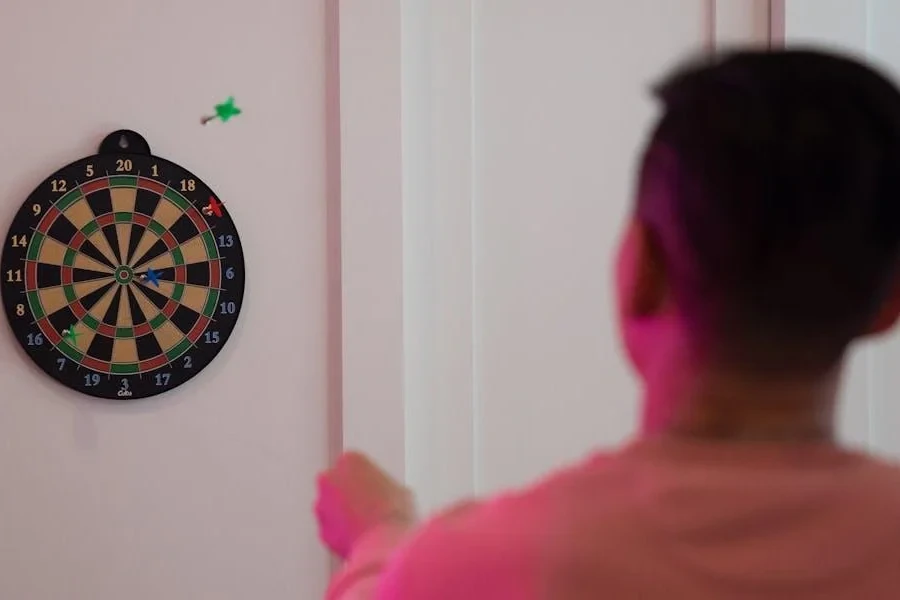
Businesses that sell dartboards should also be knowledgeable about how to set up dartboards correctly so that they can stand out to show their helpfulness and credibility to the consumers. Below, is everything you need to know about measuring height and distance for proper dartboard installation:
Standard measurements
Standard measurements should be used to ensure dartboards are installed at the right angle. The central bullseye should be precisely 1.73 meters (5 feet 8 inches) above the floor. This regulation dartboard height ensures that all players have a fair advantagement and maximizes the chance of accurate throwing.
Meanwhile, the distance from the oche (where players throw their darts) to the front of the dartboard will vary depending on the darts used. For instance, steel-tip darts need a distance of 2.47 meters or 7 feet 9 1/14 inches. However, soft-tip darts require a slightly longer throwing distance of 2.43 meters or 8 feet.
Tools required
- Tape measure
- Level
- Pencil
- Masking tape (for marking the oche)
Steps
1. Determine the height
Use the measuring tape to measure 1.73 meters (5 feet 8 inches) from the floor to the dartboard’s desired hanging point. Then, make a clear pencil mark on the wall, marking where the bullseye will lie.
2. Check wall level
Check the level to ensure the marked point is perfectly horizontal.
3. Mount the distance
Next, fasten the dartboard securely to the wall at the marked height, ensuring it’s attached firmly.
4. Create the oche
Lastly, starting from the center of the bullseye, measure the appropriate distance according to dart type – 2.37 meters for steel tips and 2.43 meters for soft tips. Then, mark this point on the ground.
Summary
Stocking the best type of darts and dartboards will help customers enjoy a more successful and fun dart game. Sellers should consider factors like board type, quality, size, and materials to ensure the options they provide match the target consumer’s preference and skill level. With the right equipment and installation measurements, consumers are guaranteed hours of fun gameplay, whether they’re casual players or aspiring professionals.
For a huge range of dart paraphernalia from thousands of trusted suppliers, make sure to visit Alibaba.com.




